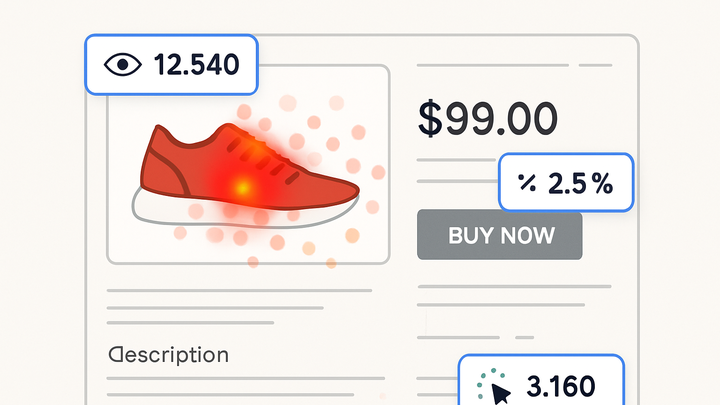Published on 2025-06-22T04:21:29Z
What is a Product Detail Page (PDP)? Examples and Analytics Tracking
Product Detail Page (PDP) is a vital e-commerce page showcasing comprehensive information about a specific product. It typically includes product images, descriptions, pricing, stock status, customer reviews, and calls-to-action like “Add to Cart”. Analytics on PDPs help measure user engagement, optimize page design, and increase conversions by tracking interactions such as view counts, scroll depth, and button clicks. Tools like GA4 and PlainSignal can capture both auto-generated and custom events to provide detailed insights. By understanding how users interact with PDP elements, businesses can identify bottlenecks, test variations, and improve the overall shopping experience. Effective PDP analytics bridges the gap between product presentation and purchasing behavior.
Pdp (product detail page)
A PDP is the e-commerce page displaying detailed product information, tracked by analytics tools to optimize user engagement and conversion.
Overview of the Product Detail Page
In this section, we define what a PDP is and outline its core components and objectives within an e-commerce context. We explain why it’s a focal point for user decision-making and revenue generation.
-
Definition and purpose
A PDP displays all relevant information about a single product to inform and persuade users to make a purchase. It serves as the key touchpoint where users transition from browsing to buying.
-
Key elements of a pdp
PDPs typically include various elements designed to present product details effectively and drive conversions.
-
Product title
The name of the product, optimized for clarity and SEO.
-
Product images
High-resolution images or galleries that allow zooming and different angles.
-
Price and availability
Current pricing, discounts, and stock status.
-
Add to cart button
A prominent call-to-action that initiates the purchase process.
-
Reviews and ratings
Customer feedback and social proof to build trust.
-
Why PDP Analytics Matter
Understanding user interactions on PDPs is essential for optimizing the shopping experience and increasing sales.
-
Impact on conversion rate
Tracking how often users add products to cart or complete purchases from the PDP helps gauge page effectiveness.
-
User engagement metrics
Metrics like time on page, scroll depth, and image zoom interactions reveal user interest levels.
-
Identifying bottlenecks
Analytics can pinpoint where users drop off, such as confusing descriptions or slow-loading images.
Implementing PDP Tracking
This section covers how to instrument PDP events using popular analytics tools like GA4 and PlainSignal.
-
Tracking with GA4
GA4 offers enhanced measurement and custom event tracking tailored to PDP interactions.
-
Enhanced measurement
Enable the ‘view_item’ automatic event to track product impressions without manual code.
-
Recommended events
Implement events such as ‘view_item’, ‘add_to_cart’, and ‘select_item’ via gtag.js or Google Tag Manager.
-
-
Tracking with PlainSignal
PlainSignal provides a lightweight, cookie-free analytics solution ideal for tracking PDP views.
-
Setup script
Include the PlainSignal snippet in your HTML:
<link rel="preconnect" href="//eu.plainsignal.com/" crossorigin /> <script defer data-do="yourwebsitedomain.com" data-id="0GQV1xmtzQQ" data-api="//eu.plainsignal.com" src="//cdn.plainsignal.com/plainsignal-min.js"></script> -
Custom event tracking
Send PDP-specific events such as ‘view_item’ with product details using the PlainSignal API.
-
Best Practices and Tips
Strategies to ensure accurate, consistent, and actionable PDP analytics data.
-
Consistent naming conventions
Use clear, standardized event names and parameters across your analytics platforms.
-
Data layer structure
Maintain a robust data layer that captures product attributes and user context.
-
Testing and validation
Regularly verify your tracking setup to ensure data accuracy.
-
Using debugview (GA4)
Check real-time event firing in GA4’s DebugView to validate your implementation.
-
Real-time reports (PlainSignal)
Use PlainSignal’s live analytics dashboard to confirm immediate event capture.
-
Common Pitfalls
Avoid these frequent mistakes when tracking PDP analytics.
-
Missing or incorrect tags
Forgetting to place the script or misconfiguring attributes can lead to data loss.
-
Overloading with too many metrics
Collecting unnecessary data can slow down performance and complicate analysis.
